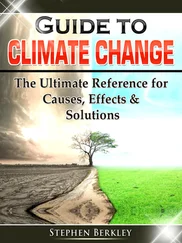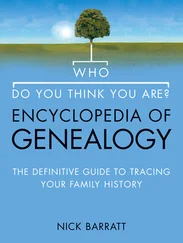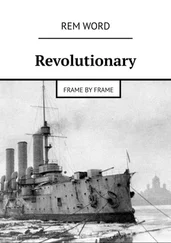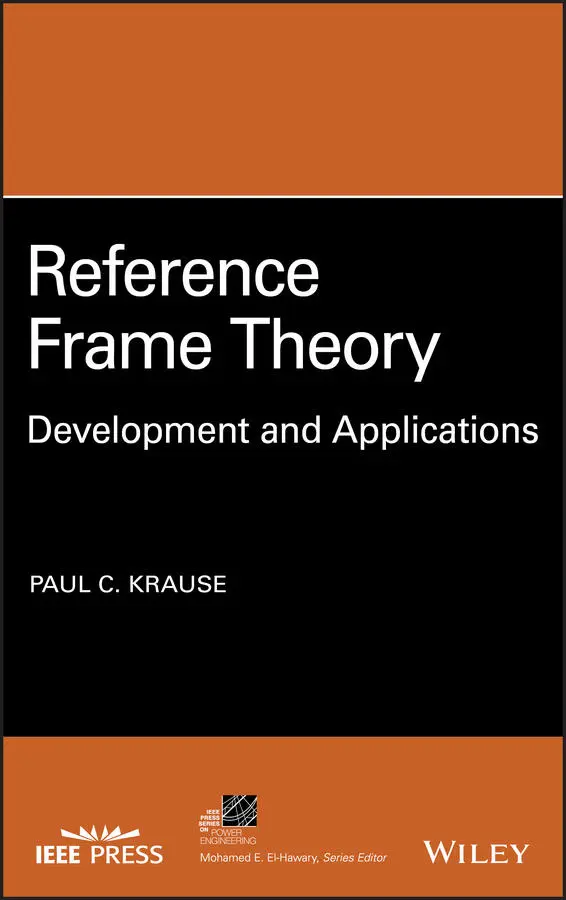
1 Cover
2 IEE Press Series on Power Engineering
3 Reference Frame Theory
4 Copyright
5 About the Author
6 Preface
7 1 A Brief History of Reference Frame Theory References
8 2 Tesla's Rotating Magnetic Field2.1 Introduction 2.2 Rotating Magnetic Field for Symmetrical Two‐Phase Stator Windings 2.3 Rotating Magnetic Field for Symmetrical Three‐Phase Stator Windings 2.4 Rotating Magnetic Field for Symmetrical Two‐Phase Rotor Windings 2.5 Rotating Magnetic Field for Symmetrical Three‐Phase Rotor Windings 2.6 Closing Comments References
9 3 Tesla's Rotating Magnetic Field and Reference Frame Theory3.1 Introduction 3.2 Transformation of Two‐Phase Symmetrical Stator Variables to the Arbitrary Reference Frame 3.3 Transformation of Two‐Phase Symmetrical Rotor Variables to the Arbitrary Reference Frame 3.4 Transformation of Three‐Phase Stator and Rotor Variables to the Arbitrary Reference Frame 3.5 Balanced Steady‐State Stator Variables Viewed from Any Reference Frame 3.6 Closing Comments References
10 4 Equivalent Circuits for the Symmetrical Machine4.1 Introduction 4.2 Flux‐Linkage Equations for a Magnetically Linear Two‐Phase Symmetrical Machine 4.3 Flux‐Linkage Equations in the Arbitrary Reference Frame 4.4 Torque Expression in Arbitrary Reference Frame 4.5 Instantaneous and Steady‐State Phasors 4.6 Flux‐Linkage Equations for a Magnetically Linear Three‐Phase Symmetrical Machine and Equivalent Circuit 4.7 Closing Comments References
11 5 Synchronous Machines5.1 Introduction 5.2 Synchronous Machine 5.3 Equivalent Circuit For Three‐Phase Synchronous Generator 5.4 Closing Comment Reference
12 6 Brushless dc Drive with Field Orientation6.1 Introduction 6.2 The Permanent‐Magnet ac Machine 6.3 Instantaneous and Steady‐State Phasors 6.4 Field Orientation of a Brushless dc Drive 6.5 Torque Control of a Brushless dc Drive 6.6 Closing Comments References
13 7 Field Orientation of Induction Machine Drives7.1 Introduction 7.2 Field Orientation of a Symmetrical Machine 7.3 Torque Control of Field‐Orientated Symmetrical Machine 7.4 Closing Comments References
14 8 Additional Applications of Reference Frame Theory8.1 Introduction 8.2 Neglecting Stator Transients 8.3 Symmetrical Components Derived by Reference Frame Theory 8.4 Multiple Reference Frames 8.5 Closing Comments References
15 Index
16 End User License Agreement
1 Chapter 7Table 7.2-1 Steady‐state voltage and torque equations for field orientation o...
1 Chapter 2Figure 2.2-1 Sinusoidally distributed stator winding. (a) Approximate sinuso...Figure 2.2-2 Closed paths of integration and the plot of  .Figure 2.2-3 Plot of sinusoidal approximation of
.Figure 2.2-3 Plot of sinusoidal approximation of  shown in Figure 2.2-2g.Figure 2.2-4 Elementary symmetrical, two‐pole two‐phase sinusoidally distrib...Figure 2.2-5 Symmetrical, two‐pole two‐phase sinusoidally distributed stator...Figure 2.2-6 Tesla's balanced steady‐state rotating magnetic field
shown in Figure 2.2-2g.Figure 2.2-4 Elementary symmetrical, two‐pole two‐phase sinusoidally distrib...Figure 2.2-5 Symmetrical, two‐pole two‐phase sinusoidally distributed stator...Figure 2.2-6 Tesla's balanced steady‐state rotating magnetic field  viewed ...Figure 2.3-1 Elementary two‐pole three‐phase sinusoidally distributed stator...Figure 2.4-1 Two‐phase rotating, identical, and sinusoidally distributed sym...Figure 2.5-1 Three‐phase rotating, identical, and sinusoidally distributed s...
viewed ...Figure 2.3-1 Elementary two‐pole three‐phase sinusoidally distributed stator...Figure 2.4-1 Two‐phase rotating, identical, and sinusoidally distributed sym...Figure 2.5-1 Three‐phase rotating, identical, and sinusoidally distributed s...
2 Chapter 3Figure 3.2-1 Two‐pole two‐phase sinusoidally distributed fictitious windings...Figure 3.3-1 Two‐phase rotating, identical, and sinusoidally distributed win...Figure 3.3-2 The fictitious qr and dr windings.Figure 3.4-1 Elementary two‐pole three‐phase sinusoidally distributed stator...Figure 3.4-2 Elementary two‐pole three‐phase sinusoidally distributed rotor ...Figure 3.5-1 Direction of rotation of  and the phase relation between
and the phase relation between  and...
and...
3 Chapter 4Figure 4.2-1 A two‐pole two‐phase symmetrical machine.Figure 4.3-1 Arbitrary reference frame equivalent circuits for a two‐phase, ...Figure 4.5-1 Equivalent circuit for a two‐phase symmetrical induction machin...Figure 4.5-2 Steady‐state torque–speed characteristics of a symmetrical indu...Figure 4.5-3 Equivalent circuit for steady‐state operation of a single‐fed s...Figure 4.5-4 Phasor diagram; motor action, s = 0.05.Figure 4.5-5 Phasor diagram; generator action, s = −0.05.Figure 4.6-1 A two‐pole three‐phase symmetrical machine.Figure 4.6-2 Arbitrary reference frame equivalent circuits for a three‐phase...
4 Chapter 5Figure 5.2-1 Salient‐rotor two‐pole three‐phase salient‐pole synchronous mac...Figure 5.3-1 Equivalent circuit for three‐phase synchronous machine in the r...Figure 5.3-2 Phasor diagram for generator operation.
5 Chapter 6Figure 6.2-1 Two‐pole two‐phase permanent‐magnet ac machine.Figure 6.2-2 (a) The  and
and  axis equivalent of a two‐phase permanent‐magnet ...Figure 6.3-1 Phasor diagram showing voltages, currents, and rotor and stator...Figure 6.3-2 Phasor diagram for
axis equivalent of a two‐phase permanent‐magnet ...Figure 6.3-1 Phasor diagram showing voltages, currents, and rotor and stator...Figure 6.3-2 Phasor diagram for  and
and  in phase.Figure 6.4-1 Inverter–machine drive. ( a ) Inverter configuration, ( b ) transis...Figure 6.4-2 Two‐pole three‐phase permanent‐magnet ac machine with sensors....Figure 6.4-3 The free‐acceleration torque–speed characteristics for a three‐...Figure 6.4-4 Phasor diagram for brushless dc drive operation at
in phase.Figure 6.4-1 Inverter–machine drive. ( a ) Inverter configuration, ( b ) transis...Figure 6.4-2 Two‐pole three‐phase permanent‐magnet ac machine with sensors....Figure 6.4-3 The free‐acceleration torque–speed characteristics for a three‐...Figure 6.4-4 Phasor diagram for brushless dc drive operation at  rad/s with...Figure 6.4-5 Torque–speed characteristics of a three‐phase machine for free ...Figure 6.4-6 Phasor diagram for brushless dc drive operation at
rad/s with...Figure 6.4-5 Torque–speed characteristics of a three‐phase machine for free ...Figure 6.4-6 Phasor diagram for brushless dc drive operation at  with
with  .Figure 6.4-7 Torque–speed characteristics for free acceleration with
.Figure 6.4-7 Torque–speed characteristics for free acceleration with  .Figure 6.4-8 Phasor diagram for brushless dc drive operation at
.Figure 6.4-8 Phasor diagram for brushless dc drive operation at  with
with  .Figure 6.5-1 Block diagram of constant‐torque control of a three‐phase perma...Figure 6.5-2 Phasor diagram for operating Point 1.Figure 6.5-3 Controlling
.Figure 6.5-1 Block diagram of constant‐torque control of a three‐phase perma...Figure 6.5-2 Phasor diagram for operating Point 1.Figure 6.5-3 Controlling  .Figure 6.5-4 Phasor diagram for operating Point 2.
.Figure 6.5-4 Phasor diagram for operating Point 2.
Читать дальше
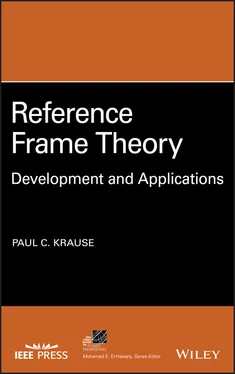

 .Figure 2.2-3 Plot of sinusoidal approximation of
.Figure 2.2-3 Plot of sinusoidal approximation of  shown in Figure 2.2-2g.Figure 2.2-4 Elementary symmetrical, two‐pole two‐phase sinusoidally distrib...Figure 2.2-5 Symmetrical, two‐pole two‐phase sinusoidally distributed stator...Figure 2.2-6 Tesla's balanced steady‐state rotating magnetic field
shown in Figure 2.2-2g.Figure 2.2-4 Elementary symmetrical, two‐pole two‐phase sinusoidally distrib...Figure 2.2-5 Symmetrical, two‐pole two‐phase sinusoidally distributed stator...Figure 2.2-6 Tesla's balanced steady‐state rotating magnetic field  viewed ...Figure 2.3-1 Elementary two‐pole three‐phase sinusoidally distributed stator...Figure 2.4-1 Two‐phase rotating, identical, and sinusoidally distributed sym...Figure 2.5-1 Three‐phase rotating, identical, and sinusoidally distributed s...
viewed ...Figure 2.3-1 Elementary two‐pole three‐phase sinusoidally distributed stator...Figure 2.4-1 Two‐phase rotating, identical, and sinusoidally distributed sym...Figure 2.5-1 Three‐phase rotating, identical, and sinusoidally distributed s... and the phase relation between
and the phase relation between  and...
and... and
and  axis equivalent of a two‐phase permanent‐magnet ...Figure 6.3-1 Phasor diagram showing voltages, currents, and rotor and stator...Figure 6.3-2 Phasor diagram for
axis equivalent of a two‐phase permanent‐magnet ...Figure 6.3-1 Phasor diagram showing voltages, currents, and rotor and stator...Figure 6.3-2 Phasor diagram for  and
and  in phase.Figure 6.4-1 Inverter–machine drive. ( a ) Inverter configuration, ( b ) transis...Figure 6.4-2 Two‐pole three‐phase permanent‐magnet ac machine with sensors....Figure 6.4-3 The free‐acceleration torque–speed characteristics for a three‐...Figure 6.4-4 Phasor diagram for brushless dc drive operation at
in phase.Figure 6.4-1 Inverter–machine drive. ( a ) Inverter configuration, ( b ) transis...Figure 6.4-2 Two‐pole three‐phase permanent‐magnet ac machine with sensors....Figure 6.4-3 The free‐acceleration torque–speed characteristics for a three‐...Figure 6.4-4 Phasor diagram for brushless dc drive operation at  rad/s with...Figure 6.4-5 Torque–speed characteristics of a three‐phase machine for free ...Figure 6.4-6 Phasor diagram for brushless dc drive operation at
rad/s with...Figure 6.4-5 Torque–speed characteristics of a three‐phase machine for free ...Figure 6.4-6 Phasor diagram for brushless dc drive operation at  with
with  .Figure 6.4-7 Torque–speed characteristics for free acceleration with
.Figure 6.4-7 Torque–speed characteristics for free acceleration with  .Figure 6.4-8 Phasor diagram for brushless dc drive operation at
.Figure 6.4-8 Phasor diagram for brushless dc drive operation at  with
with  .Figure 6.5-1 Block diagram of constant‐torque control of a three‐phase perma...Figure 6.5-2 Phasor diagram for operating Point 1.Figure 6.5-3 Controlling
.Figure 6.5-1 Block diagram of constant‐torque control of a three‐phase perma...Figure 6.5-2 Phasor diagram for operating Point 1.Figure 6.5-3 Controlling  .Figure 6.5-4 Phasor diagram for operating Point 2.
.Figure 6.5-4 Phasor diagram for operating Point 2.




